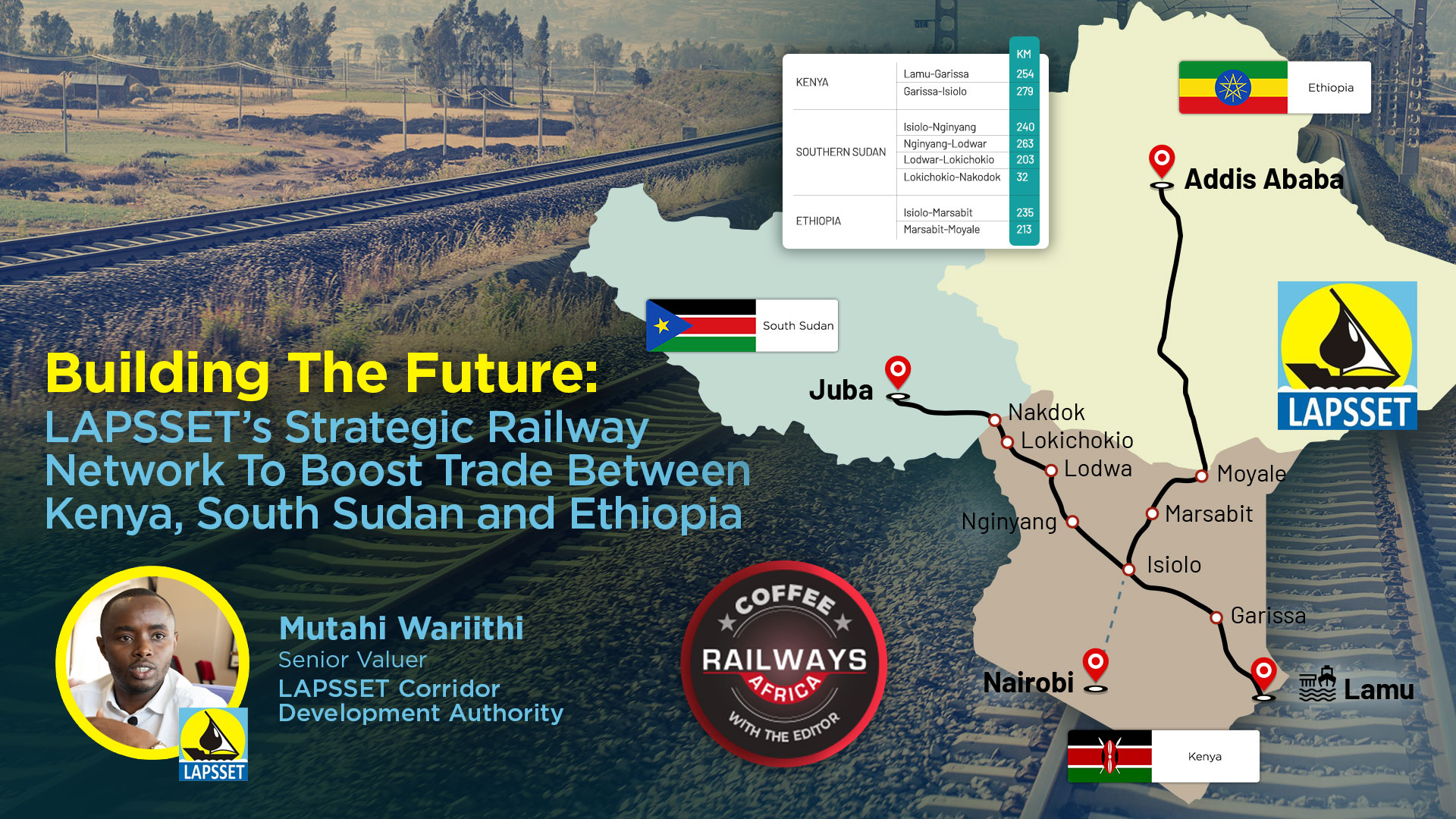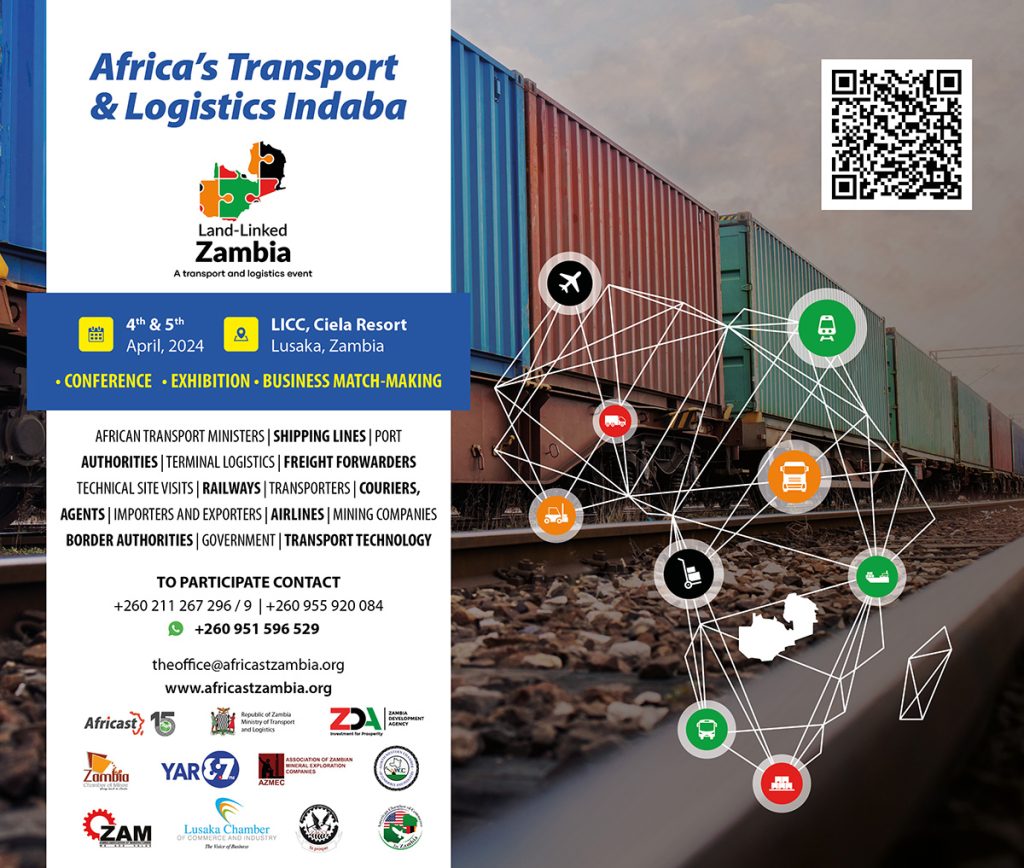In a recent Coffee with the Editor interview, Mutahi (Alex) Wariithi, Senior Valuer at LAPSSET Corridor Development Authority, provided insight into the LAPSSET project and its current status, particularly from a railway perspective.
LAPSSET stands for Lamu Port – South Sudan – Ethiopia Transport, a significant transport and economic corridor. The objective of this project is to develop regions of Kenya that have remained underdeveloped since independence, covering about 70% of the country’s land mass. The Port of Lamu serves as the project’s anchor point, providing a critical connection to the sea. Kenya, bordered by the landlocked countries of South Sudan and Ethiopia, has seen these nations traditionally use the Port of Mombasa. However, both South Sudan and Ethiopia have expressed interest in trading through Kenya due to the combined potential of their populations.
To address this, the LAPSSET Corridor aims to create an intermodal transport system comprising roads and railways. This system will facilitate the movement of goods from the Port of Lamu to Isiolo, then to Moyale, and further connect to Modjo, where the Ethiopian railway line begins. Additionally, the corridor extends from Isiolo to Juba, South Sudan, integrating the transport networks of the three countries.
The LAPSSET Corridor is positioned to foster African integration, enhance trade, and facilitate the movement of people and goods. To achieve this, Kenya has planned approximately 2,000 kilometres of new Standard Gauge Railway (SGR). This rail network will connect the Port of Lamu to Isiolo, a central hub, and extend to Ethiopia, Juba in South Sudan, and Kenya’s capital, Nairobi. An auxiliary line will also connect to the Port of Mombasa.
This railway line is crucial for Kenya’s development. Although the feasibility study conducted in 2011 is somewhat outdated, it highlights the profitability and future potential of this rail project. Recognising the importance of this infrastructure, the Kenyan government has engaged in multilateral discussions with South Sudan and Ethiopia. Recently, a bilateral agreement with Ethiopia was signed to use the Port of Lamu for importing goods, underscoring the commitment to developing the rail network to facilitate efficient freight movement.
The distance from the Port of Lamu to the Kenya-Ethiopia border is approximately 1,200 kilometres. One of the main challenges currently faced is that the feasibility study on the Kenyan side was conducted in 2011, with another contractor-led study in 2015. However, Ethiopia has not yet completed its part of the study, which is necessary for achieving seamless connectivity between the countries.
Both countries aim to collaborate on the feasibility study, detailed design, and engineering work to address this. LAPSSET is seeking funding from AUDA-NEPAD’s Infrastructure Project Preparation Facility (IPPF) to fund this feasibility and detailed design and engineering for both countries. Given the significant financial requirements for this infrastructure investment, it is essential that innovative financing solutions are explored. The goal is to conduct comprehensive studies to enhance the project’s bankability, thereby attracting potential investors.
For the LAPSSET project, the focus is on freight due to the high demand. Ethiopia’s population is about 120 million, Kenya’s is approximately 54 million, and South Sudan’s is around 11 million. The southern part of Ethiopia, which has a significant population, has not been served by rail. Therefore, the railway aims to serve this area, as well as Nairobi and central Kenya. These regions are predominantly agricultural, while the northeastern part of Kenya is mainly involved in livestock.
While industries exist in Kenya, mining is not a significant activity in the region. Detailed feasibility studies are necessary to determine how the project can reach a level of readiness that is attractive to investors. South Sudan is a critical partner in this project, with 98% of its GDP from natural resources such as oil. It is vital to find ways to leverage the agricultural and mineral resources of the three countries, presenting figures that make sense to potential investors.
In Kenya, policies have been put in place and a new rail bill (Railways Amendment Bill 2024) is being introduced. This bill will separate the operational aspects of the rail business from the infrastructure management and regulatory oversight.
For a long time, the Kenya Railways Corporation has been the operator, owner of the infrastructure and regulator. The aim is to transition to an open-access model. This change will enable the private sector to operate, with a strong regulator overseeing the infrastructure and collaborating with partner states.
From a LAPSSET perspective, a high-level platform is being proposed to ensure smooth connectivity, operation and construction. This platform would include a Secretariat for the three partner countries, facilitating technical decisions at the ministerial level, ensuring unified operations and seamless movement.
Ps: Recently the MV Abbay II has docked at Lamu Port, discharging a consignment of 60,000 Metric Tons of Fertilizer destined for Ethiopia through the LAPSSET Corridor. With no rail in place that is all being transported by truck, roughly 2000 trucks…

